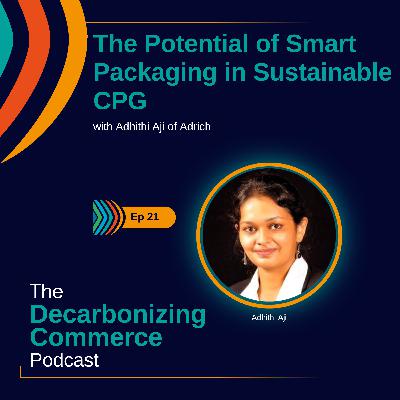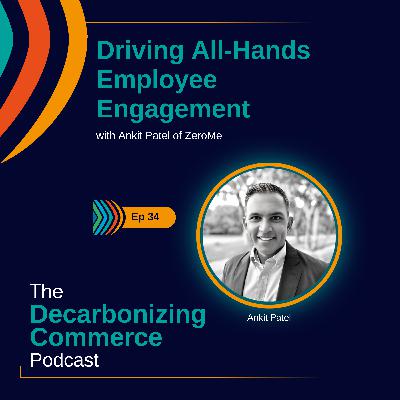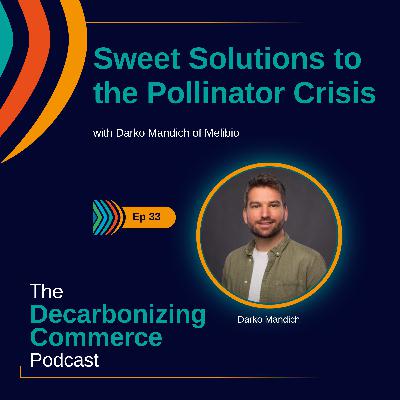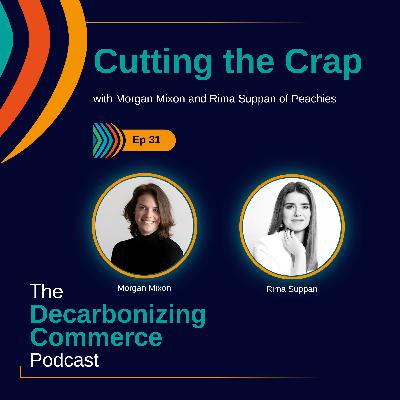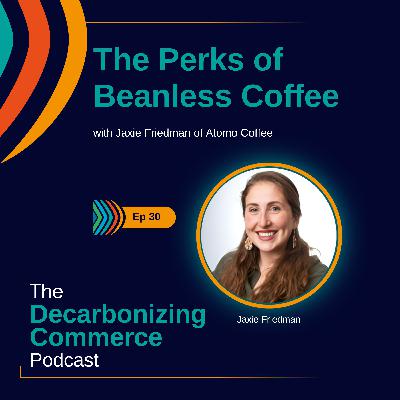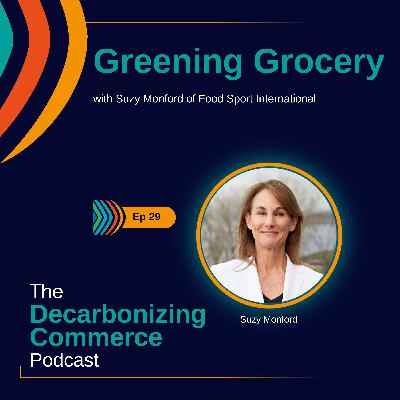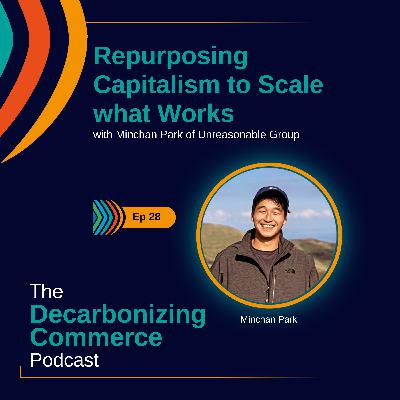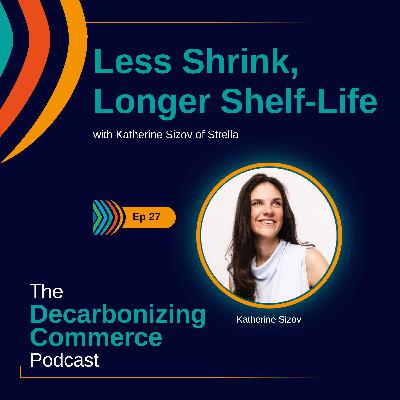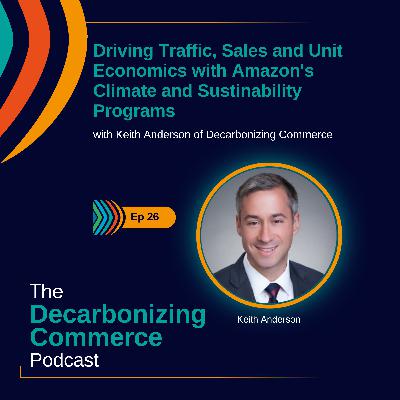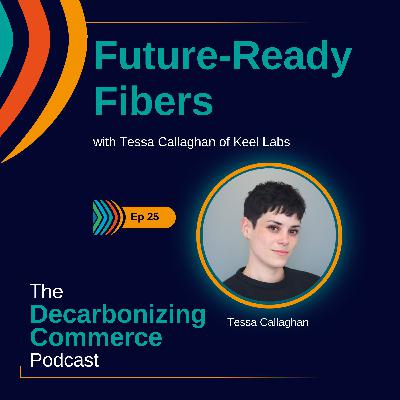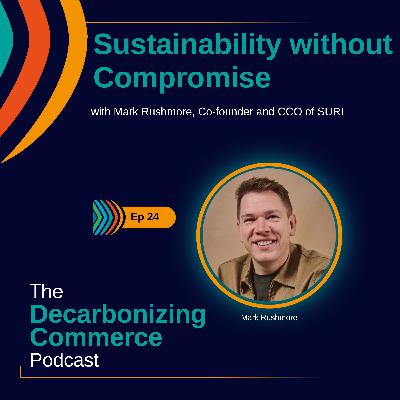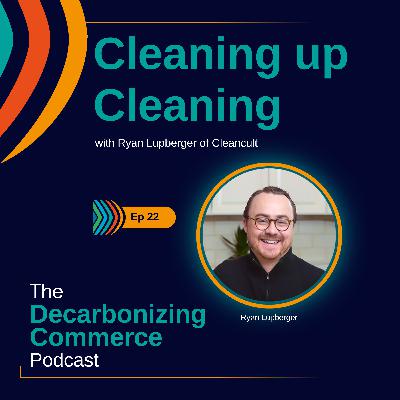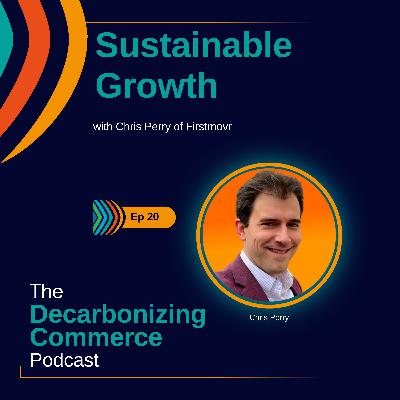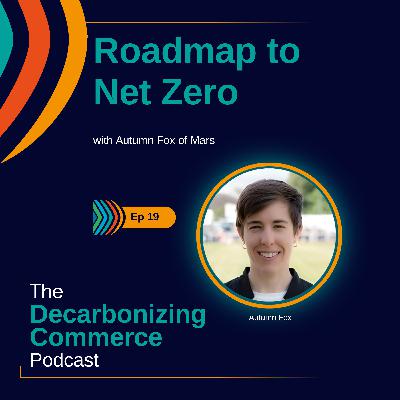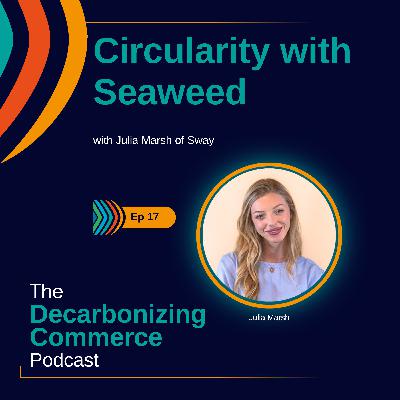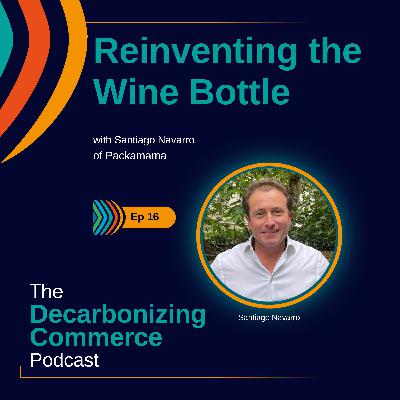The Potential of Smart Packaging in Sustainable CPG with Adhithi Aji of Adrich
Update: 2024-03-28
Description
This week's episode features Adhithi Aji, founder and CEO of Adrich, a smart packaging solution for connected e-commerce. Adrich takes some of the friction out of replenishing consumable products, helping overcome some of the challenge of changing behavior in the shift to more sustainable consumption models.
Tune in to hear more about how it plays a role in accelerating behavioral change in areas like refillable packaging, other use cases and possibilities, and the unit economics of new technologies in the connected packaging space.
Tune in to hear more about how it plays a role in accelerating behavioral change in areas like refillable packaging, other use cases and possibilities, and the unit economics of new technologies in the connected packaging space.
Learn more about Adhithi Aji:
To listen to the full episode join our Plus or Pro memberships at decarbonize.co:
If you enjoyed this episode then please:
- Follow, rate, and review on Apple Podcasts
- Follow and rate on Spotify
Learn more about Decarbonizing Commerce at decarbonize.co
TRANSCRIPT BELOW:
Keith Anderson: Welcome to Decarbonizing Commerce, where we explore what's new, interesting, and actionable at the intersection of climate innovation and commerce. I'm your host, Keith Anderson, and together we'll meet entrepreneurs and innovators reinventing retail, e-commerce, and consumer products through the lenses of low carbon and commercial viability.
TRANSCRIPT BELOW:
Keith Anderson: Welcome to Decarbonizing Commerce, where we explore what's new, interesting, and actionable at the intersection of climate innovation and commerce. I'm your host, Keith Anderson, and together we'll meet entrepreneurs and innovators reinventing retail, e-commerce, and consumer products through the lenses of low carbon and commercial viability.
I'm Keith Anderson. This is the Decarbonizing Commerce podcast. Thanks for listening. This week's guest is Adhithi Aji, who's founder and CEO of a company called Adrich, which is smart packaging for connected e-commerce. And I had to spend a little time on the website and with Adhithi to understand what smart packaging for e-commerce is all about.
But the more I learned, the more intrigued that I was, because, you know, we've had a few conversations already about the role of refillable and reusable packaging, both on the consumer side and backstage in internal logistics. And one of the big themes of the conversation we had with Mike Newman of Returnity, if you caught that episode, is behavioral change is really challenging.
And even when somebody has an intent to make a choice as a consumer that is maybe more sustainable, inertia and habit play a big role in preserving the status quo, and so I won't steal Adhithi's thunder about how Adrich does what it does, but it takes some of the friction out and effectively automates some of the work of replenishing a consumable product that you might want to reorder and refill packaging with.
And so in our conversation, we certainly got to know a bit more about Adhithi and where Adrich comes from, how it works, how it plays a role in accelerating behavioral change in areas like refillable packaging. But we talk about other use cases and possibilities. I'm always curious about the unit economics of new technologies like this, and we covered that.
We talked about some of the categories where it's a better fit than others and much more. So, I think you'll enjoy meeting and learning from Adhithi Aji of Adrich.
Adhithi, thanks for joining the Decarbonizing Commerce podcast.
Adhithi Aji: Hi, Keith. Thanks for having me here. Excited to talk more.
Keith Anderson: Well, so am I. You know, I discovered your company a few months ago, and the website has a lot of words that were interesting to me. You know, you characterize what you're doing at Adrich as Connected E-commerce, I thought maybe just to contextualize things for listeners, we could start with, you telling us what is Adrich exactly and how did you end up starting the company?
Adhithi Aji: Sure thing.
So, Adrich is a smart packaging enabled e-commerce, and connected e-commerce solution in that it has a hardware, which is a smart label, that tracks consumption of each individual unit of product in terms of the volume remaining. And, it has sensor-based smart labels and smart in the true sense that it's not RFID, it is not a QR code, but it's a sensor-enable label that tracks volume remaining and auto reorders automatically for the consumer or end user without having them to push a button or scan or do anything. And when they're down to 20% it detects that, it reorders, and it routes it to any e-commerce platform. So for you as a consumer, the next time you run out of coffee or shampoo, you'll find one at the door.
And for the brands and retailers, it's really about increasing consumer lifetime value and improving the subscription programs that we have today. Because today, consumers, when they run out or when they opt in for subscribe and save or any such programs, you either get more product than you need or you run out earlier.
And that is not very fun because they charge your credit card. We changed that to individual consumption based subscription, which means you'll get the next product only when you run out. Not early, not too late.
And that way brands are reducing the churn from the subscription programs as well.
Keith Anderson: I'm smiling because I have somewhere around a half dozen subscriptions that either get paused or a month gets skipped as we end up having a surplus and then we end up going a few weeks without, and you know, when, when I was getting to know your platform, it reminded me certainly of subscribe and save type programs and also of the dash replenishment button and dash replenishment service that Amazon introduced and has now sort of retired and rolled into Alexa.
But I remember in, in both of those implementations, the idea was almost an extension of one click ordering for replenishable products to, again, reduce some of the friction of, getting what you needed again, right when you need it. And so, both from a commercial and a customer behavior point of view, this is a really interesting idea.
Adhithi Aji: Right? On the note of the dash button, right, so we are integrated with Amazon on Alexa now, so think of it as the advanced version of the dash button. I think one challenge, with the dash button was, that consumers had to have these buttons all over their homes. And, an interesting, learning from that dash button was the kids were going on pressing the button because it was fun.
And they'd just keep ordering, right? So the parents got a whole bunch of products. So, we're in fact working with Amazon to kind of introduce this as an advanced version of the dash button where it's zero touch. You don't even have to push a button. It'll automatically detect you're running out and auto reorder.
Keith Anderson: Got it. So, tell us a bit about how, how did you end up, you know, working on this problem and creating Adrich?
Adhithi Aji: Yeah, it's interesting. It started as a capstone project when I was studying in Carnegie Mellon. I did a master's specializing in innovation management, right? How do you bring high end research technologies to market? And, you know, during that time, came up with an idea. So I'm an electrical engineer by trade.
And also I have a supply chain management and MBA in that program. And, so the last mile data was sort of missing, right? There was a lot of data up until the retail store, but once the product leaves the store, it's sort of a black box. Brands don't know how consumers are using the product, how much they are now, are they using it once and throwing it in the trash?
That gap in that data set is probably why all the problems of supply chain, marketing, and in terms of inventory control, all of those problems stem from not having consumption data. So the idea, and honestly my passion circles, came together with electrical engineering and supply chain and product management in that our mission became to enable brand managers, retailers with usage and consumption data and that last mile data that could really empower them to build better products suited to consumer needs, make sure they get the right product to the right consumer at the right time. And for consumers, really, our days are so busy these days that we want some quality time and, just bringing convenience into the day to day life. That's really the key and doing that with sustainability in mind because we can enable this auto reordering for refills and not just single use plastic. And that way we are reducing reusing, re refilling, introducing refill and reducing single use plastics.
Keith Anderson: Well, I appreciate you handling that segue on my behalf. That was where I was going to lead the conversation next, because, you know, that's one of the clearest linkages, I think, to what you're doing and some of the goals and targets that a lot of, certainly big CPGs, but not just the big ones, have.
And as you and I were discussing, previously, the, the, a challenge, maybe the biggest challenge to several of these consumer facing refillable and reusable packaging initiatives has really been driving adoption and getting shoppers to, you know, be consistent in u
Comments
In Channel

